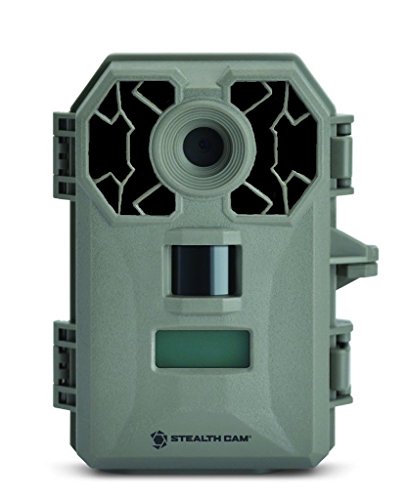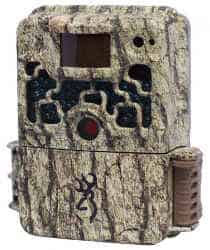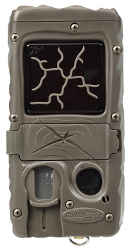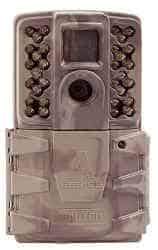One of the most common questions we get is just how far can a trail camera take a picture? We know that 100 feet is pretty standard, but this got us thinking about what the furthest distance really is, what to look for in long range game cameras, and what camera is best for long distance situations?
One of the most nerve racking feelings is checking your trail camera and realizing that huge buck is a little too far away to see clearly. So we did a little research about what makes game cameras great for taking long distance photos. For trail cameras to be able to take pictures of distant objects, they must have the right focal lens, a fast trigger speed, and a long distance motion detector. All of these factors combined result in a good long distance trail camera that can take pictures the furthest.
Let’s look in to these factors that determine how far a trail camera can take a picture and what you need to know about them.
Factors that Determine How Far a Trail Camera Can Take a Picture
Every trail camera is not created equal. Internal components differ widely between manufacturers and most cameras are designed for close shots around feeders and trail heads. Regardless, some trail cameras have proven themselves to take good long range photos and they all seem to have some things in common.
List of Features That Lead to the Best Long Distance Trail Camera Pictures
- Focal Length
- Motion Sensor Range
- Trigger Speed
- IR Sensor Range
Focal Length
When deciding how far a trail camera can take a picture, the most important aspect is focal length. Focal length is the distance between the center of a lens or curved mirror and its focus.
The longer the focal length is, the narrower the angle of view and greater the magnification will be. The shorter the focal length, and the wider the view will be. Wider views are not ideal for taking the furthest pictures.
Focal length can be hard to find for most trail cameras. Most aren’t listed at all. This is understandable since trail cameras are designed to shoot on average between 10 and 15 feet and tend to be similar across the board.
Cuddeback lists many of their trail cameras with longer focal lengths of up to 44mm. In contrast, Primos Bulletproof 2 camera has a focal length of 7.6mm for close up and wide pictures.
Motion Sensor Range
When accessing how far a trail camera can take a picture, the motion sensor range is extremely important. What good is a great camera if it isn’t being triggered to take the picture?
Motion sensors work by detecting infrared waves given off by heat from objects like people, animals, and vehicles. Once this heat change is detected, the camera is activated.
These passive infrared (PIR) sensors like in the Moultrie A-30 Game Camera, can detect animals out to 70 feet. The Cuddeback Model E2 Long Range can sense heat changes of up to 100 feet.
Trigger Speed
The speed at which the camera fires once triggered is referred to as the trigger speed. The trigger speed is important because the photo must be taken while the object is still in frame. Fast moving objects liked deer running can often lead to blank pictures on cameras with slow trigger speeds.
Trigger speeds typically range from 0.3 seconds to 1 second. This may not sound like a big difference, but when it means your picture shows a bucks antlers or his tail, it means everything.
Top rated trail cameras like the Browning Strike Force have a 0.3 second trigger speed which is fast enough capture animals in dead sprint. For taking long distance pictures, make sure the trigger speed is below 0.5 seconds.
IR Sensor Range
Most trail cameras are equipped with up to 50 infrared 850nm or 940-nanometer spectrum emitters designed to take pictures at night. Each emitter is a light emitting diode (LED) which transmits infrared signals to the camera unit.
When these emitter work in unison, they provide a wide range of night vision for crystal clear black and white photos. Infrared emitters are capable of penetrating up to 100 on the darkest nights.
To find out how far a trail camera can take a picture, it’s a combination of focal length, motion sensor range, trigger speed, and IR sensor range. The best trail cameras for long range have high scores in all of these areas.
How to Set Up a Game Camera to Take Long Distance Photos
Setting up a game camera correctly is just as important as having a good camera. If you can’t position it correctly or take the best steps possible to insure usable photos, distance means nothing.
Proper Trail Camera Mounting Height
Positioning your trail camera is often location dependent, but several tips apply for most locations when factoring in distance. To make sure your pictures capture the entire animal, set it approximately at belt height.
Belt height is perfect for deer and bear, but may need to be adjusted for moose or elk. It’s also important that the trail camera be mounted level to take advantage of the maximum camera distance and field of view.
Clear Vegetation in Front of Trail Camera
Sounds like common sense, right? Well, we’ve seen plenty god camera set ups ruined by unexpected limbs obscuring views. Always carrying a pair of limb cutters and clear out a nice lane for your camera to take unobstructed pictures,
Account for windblown leaves and branches that could falsely trigger the camera during periods of high winds or storms. Avoid placing your trail camera on species of trees that shed multiple times a year.
In short, mount your camera at belt height, as level as possible and clear any obstructions from view that may falsely trigger the camera sensor.
What Trail Cameras Take the Furthest Pictures?
The best trail cameras for long distance pictures should score high on focal length, motion sensor range, trigger speed, and IR sensor range. Below is a list of our top 3 trail cameras for long distance photos and how they stack up.
The Stealth Cam 2020 G42NG camera has an impressive IR range of 100 feet.
- RETINA(Sub1-‐Second Trigger) – Superior low...
- 42 "BLACK" IR Emitters/100ft range
- Reflex Trigger - .5 seconds
- New Intuitive backlit menu programming. Retina...
- Burst Mode 1-9 images per triggering. The...
Browning Strike Force HD
Focal Length – 40mm
Motion Sensor Range – 55 feet
Trigger Speed – 0.3 Seconds
IR Sensor Range – 100 feet
CuddeLink Long Range IR
Focal Length – 44mm
Motion Sensor Range – 100 feet
Trigger Speed – 0.25 Seconds
IR Sensor Range – 100 feet
Moultrie A-30 Game Camera
Focal Length – 30mm
Motion Sensor Range – 70 feet
Trigger Speed – 0.70 Seconds
IR Sensor Range – 70 feet
Bottom Line
Taking long distance game camera pictures isn’t luck, it comes down to having a camera that excels in a few key areas. The combination of these factors working together allow for photos of deer and other animals to be taken at surprising ranges.
The most important aspects that all trail cameras must have for taking pictures further out is a high focal length, fast trigger speed, high motion sensor range, and long distance IR emitters. Each of these combined with mounting your trail camera properly at belt height, level, and without obstructions will insure you are taking pictures the furthest distance away as possible.
How far can a trail camera take a picture? Not much further than 100 feet with enough zoom and clarity to be useful.
CLICK HERE FOR MORE TRAIL CAMERA REVIEWS
Check out more Outdoor Product Guides and Reviews on our Blog!
OutdoorProductGuide.com is a participant in the Amazon Services LLC Associates Program, an affiliate advertising program designed to provide a means to earn fees by linking to Amazon.com and affiliated sites.
Last update on 2024-02-02 / Affiliate links / Images from Amazon Product Advertising API





